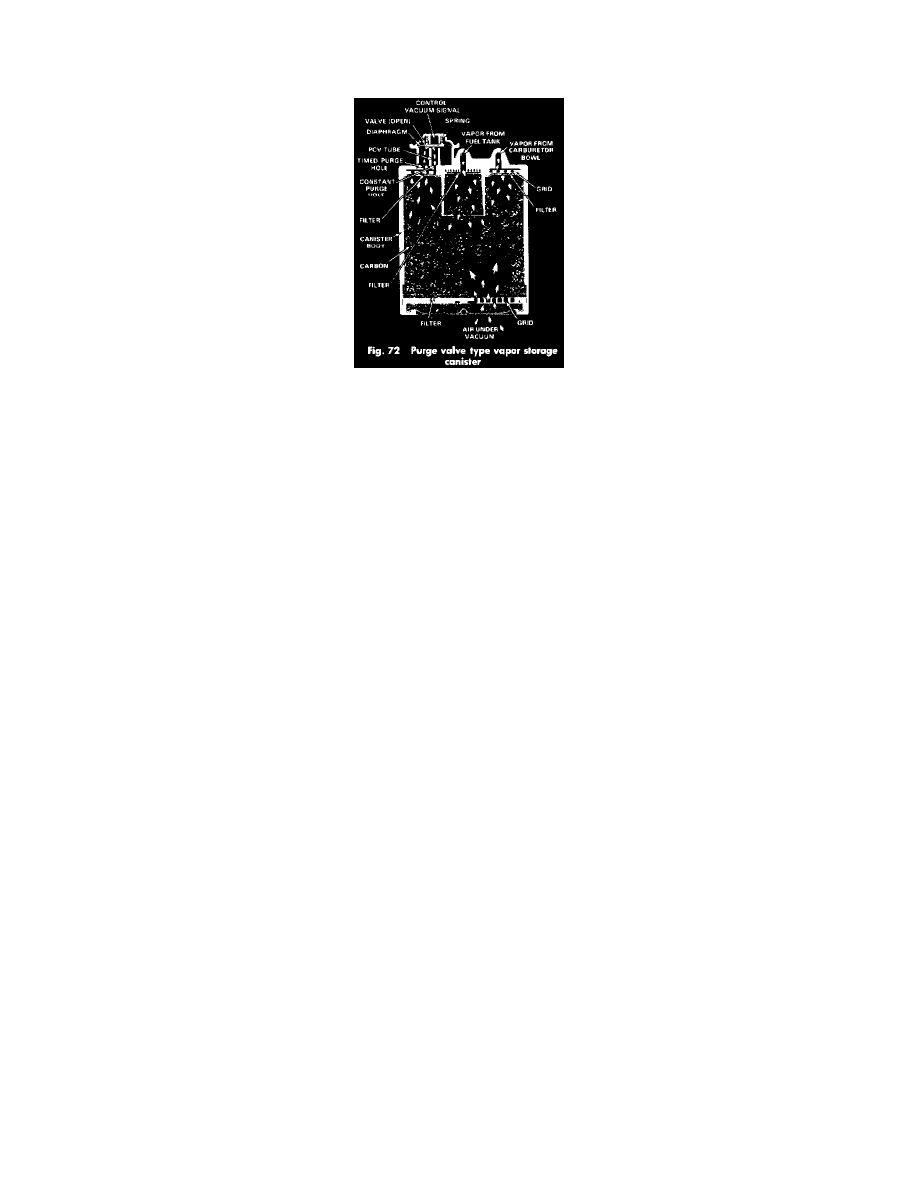Firebird V8-305 5.0L (1982)

Evaporative Emission Control Canister: Description and Operation
Purge Valve Type
Fig. 72 Purge Valve Type Vapor Storage Canister
This canister absorbs fuel vapors from the fuel tank through a tube on the canister marked "Fuel Tank" and from the carburetor through a tube
marked "Carb Bowl". The fuel vapors enter the canister and are absorbed by activated charcoal when the engine is not running.
The canister is equipped with a purge valve which is an integral part of the vapor canister. The purge valve consists of a housing and tube molded
into the canister cover, and a diaphragm, valve assembly, valve spring and diaphragm cover with an integral control vacuum signal tube.
When the engine is idling, spring tension holds the purge valve closed. A small amount of fuel vapor is then drawn from the canister through a
calibrated bleed hole which leads from the charcoal bed to the tube marked "PCV", enabling some purge of the canister through the PCV hose
while the engine is at idle.
As engine speed increases, the carburetor throttle valve passes by a timed vacuum port and vacuum is supplied through a tube leading to the top of
the purge valve diaphragm marked "Control Vac". This vacuum lifts the purge valve off its seat, opening another channel leading to the charcoal
bed. This enables more fuel vapors to be combined with the increased air/fuel ratio of the carburetor.
Both purge channels in the canister lead to a common "PCV" tube, which is directly connected to the PCV hose from the engine.
